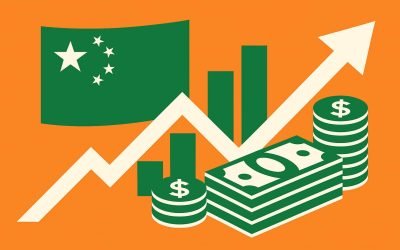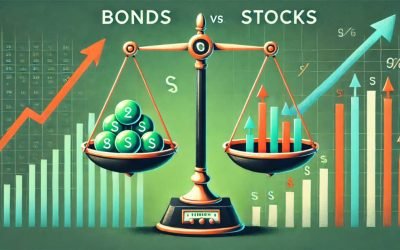Understanding the Art Market
Investing in art can be a rewarding venture, both financially and aesthetically. However, it requires a deep understanding of the art market, which is complex and multifaceted. This article aims to provide a comprehensive guide on how to start investing in art and what factors to consider to make informed decisions.
The Evolution of the Art Market
The art market has evolved significantly over the centuries. From the patronage system of the Renaissance to the contemporary art fairs and online auctions, the ways in which art is bought and sold have changed dramatically. Understanding this evolution can help investors navigate the current market landscape.
Types of Art Investments
There are various types of art investments, each with its own set of risks and rewards. These include:
- Old Masters: Works by artists from the Renaissance to the 18th century.
- Modern Art: Art from the late 19th century to the mid-20th century.
- Contemporary Art: Art created from the 1970s to the present day.
- Emerging Artists: Works by new and upcoming artists.
How to Start Investing in Art
Research and Education
Before diving into the art market, it’s crucial to educate yourself. This involves:
- Reading Books and Articles: There are numerous books and articles on art investment that can provide valuable insights.
- Attending Art Fairs and Exhibitions: These events offer a chance to see a wide range of artworks and meet artists, dealers, and other investors.
- Taking Courses: Many institutions offer courses on art history and art investment.
Setting a Budget
Determine how much you are willing to invest in art. This budget should be based on your financial situation and investment goals. Remember, art investment is not just about the potential financial return; it’s also about the enjoyment and cultural value of the artworks you acquire.
Building a Network
Networking is essential in the art world. Building relationships with artists, dealers, collectors, and other investors can provide valuable information and opportunities. Attend gallery openings, art fairs, and other events to expand your network.
Choosing the Right Artworks
Selecting the right artworks to invest in requires a combination of personal taste and market knowledge. Consider the following factors:
- Artist’s Reputation: Research the artist’s background, including their education, exhibitions, and previous sales.
- Provenance: The history of ownership of the artwork can affect its value.
- Condition: The physical state of the artwork is crucial. Damaged or poorly restored works can lose value.
- Rarity: Unique or rare works are often more valuable.
What to Consider When Investing in Art
Market Trends
Keeping an eye on market trends can help you make informed investment decisions. This involves:
- Following Auction Results: Auction houses like Christie’s and Sotheby’s publish results that can provide insights into current market trends.
- Reading Market Reports: Various organisations publish reports on the art market, highlighting trends and providing data on sales and prices.
- Monitoring Art Fairs: Major art fairs often set trends in the market. Pay attention to the artists and works that attract the most attention.
Diversification
Diversifying your art portfolio can help mitigate risks. This means investing in different types of art, artists, and periods. A diversified portfolio is less vulnerable to market fluctuations and can provide more stable returns.
Storage and Maintenance
Proper storage and maintenance are crucial to preserving the value of your artworks. Consider the following:
- Climate Control: Artworks should be stored in a climate-controlled environment to prevent damage from humidity and temperature fluctuations.
- Security: Ensure that your artworks are stored in a secure location to prevent theft or damage.
- Insurance: Insure your artworks to protect against loss or damage.
Legal Considerations
There are various legal considerations when investing in art, including:
- Authenticity: Ensure that the artwork is authentic. This may involve obtaining certificates of authenticity or consulting experts.
- Provenance: Verify the provenance of the artwork to ensure that it has not been stolen or illegally exported.
- Contracts: When buying or selling art, ensure that all transactions are documented with clear contracts.

Conclusion
Investing in art can be a fulfilling and potentially profitable endeavour. However, it requires careful research, education, and consideration of various factors. By understanding the art market, setting a budget, building a network, and choosing the right artworks, you can make informed investment decisions. Additionally, keeping an eye on market trends, diversifying your portfolio, and ensuring proper storage and maintenance can help protect and enhance the value of your investments.
In summary, art investment is not just about financial returns; it’s also about the enjoyment and cultural value of the artworks you acquire. With the right approach, you can build a valuable and rewarding art collection.
Q&A Section
| Question | Answer |
|---|---|
| What is the first step in investing in art? | The first step is to educate yourself by reading books and articles, attending art fairs and exhibitions, and taking courses on art history and investment. |
| How do I determine my budget for art investment? | Your budget should be based on your financial situation and investment goals. Consider both the potential financial return and the enjoyment and cultural value of the artworks. |
| What factors should I consider when choosing artworks to invest in? | Consider the artist’s reputation, provenance, condition, and rarity of the artwork. |
| How can I keep up with market trends? | Follow auction results, read market reports, and monitor major art fairs to stay informed about current market trends. |
| What are some legal considerations when investing in art? | Ensure the authenticity of the artwork, verify its provenance, and document all transactions with clear contracts. |
If you’re interested in investing in art, there are several key factors to consider. Here are a few excellent resources to help you get started:
- Masterworks’ Beginner’s Guide to Investing in Art offers insights on different categories of artwork such as Old Masters, Blue Chip Art, and emerging artists. It highlights the importance of understanding the unique aspects of art investment, such as its illiquid nature and the challenge of finding comparable sales for valuation. Masterworks also explains the increasing popularity of fractional art investments, where investors can buy shares in high-value artworks (Masterworks).
- FinanceBuzz’s Guide to Art Investment provides a comprehensive overview, particularly focusing on the potential of fractional shares in art as a more affordable way to invest. This guide discusses various investment methods, including buying from art fairs, galleries, or NFT platforms, and emphasizes the importance of doing thorough research to make informed choices (FinanceBuzz).
- MyArtBroker emphasizes the value of print and multiples, a segment of the art market that offers a more accessible entry point for new investors. This guide explains how prints from renowned artists like Warhol and Banksy can offer a lower-risk way to start building an art portfolio, while still allowing for potential appreciation (MyArtBroker).
- Quantus Gallery’s Art Investment Guide outlines a clear step-by-step process for getting started. It stresses the importance of research, consulting with experts, and financial planning. The guide also provides advice on choosing between art auctions, funds, or galleries and explains the significance of understanding market trends (Quantus Gallery).
- Chuck Black Art’s Beginner’s Guide focuses on the long-term nature of art investment, highlighting the importance of buying art that you genuinely appreciate while keeping in mind its potential to appreciate over time. The guide also touches on practical aspects, such as caring for physical artwork to preserve its value (Chuck Black Art).
These resources can provide valuable starting points as you explore art investment, whether through direct purchases or newer methods like fractional ownership.















 How to trade CFD? (00:49)
How to trade CFD? (00:49) How to trade binary options*? (01:22)
How to trade binary options*? (01:22) Forex. How to start? (01:01)
Forex. How to start? (01:01)